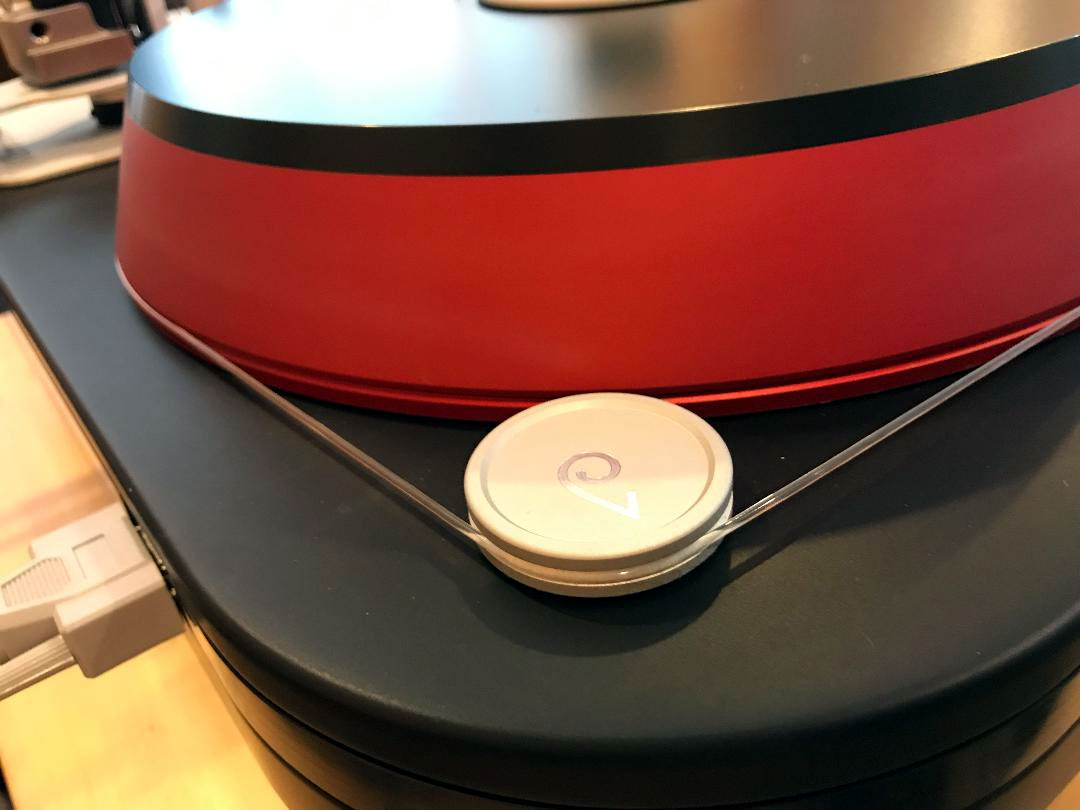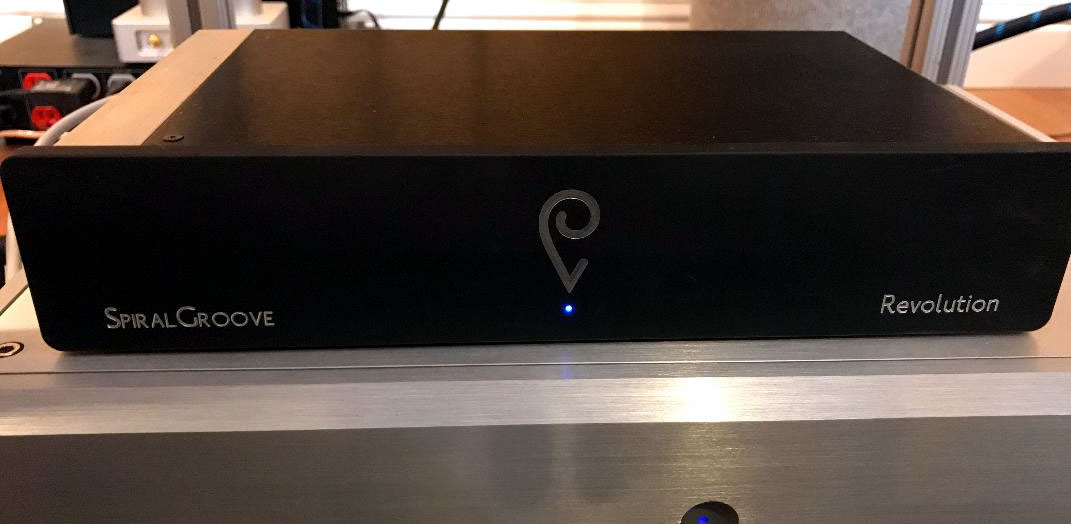Internal wiring of the Centroid is high purity copper hyperlitz, and the tonearm provides adjustments of all parameters of operation, including overhang, VTA, azimuth, zenith, anti-skate, as well as tracking force. A custom, featherlight screw-down record clamp is included, which precludes the use of other aftermarket designs. A pair of RCA terminals allows for the user’s choice of cables. For this review, the MIT Cables Oracle MA-X2 RCA cables ($12k) and the Audio Note Sogon RCA alternated as reference phono cables. The rest of the review system remained as described in Part 1 of this Analog Survey.
Cartridges used in this part of the Analog Survey included the Fuuga ($8,950), the Soundsmith Paua II ($3,995) and the Audio Note IO I ($3,800, pound-dollar exchange rate dependent).
The Spiral Groove system, when presented with first-class recordings, such as the solo piano transcription of the Mussorgsky Pictures At An Exhibition by Shura Cherkassy (Nimbus Records Super Analog Master 45, 45007), demonstrated the beauty of the format by retrieving supple and dense tonality and expeditious transients. While its level of performance was not as definitive as the TriangleArt, the Spiral Groove projected a lifelike silhouette of the grand piano into the listening space. The magic arising from the maestro’s masterful control of the complex instrument drew me into his mental state. Shutting my eyes, I was able to follow Cherkassy’s very deliberate, mindful and yet heavy pacing during one passage, and chuckled in delight as he put his foot to the pedal and left me in his wake.
The Spiral Groove, particularly the Centroid tonearm, relayed a convincing treatment of the dynamic contrast of pianissimos and fortissimos dug up from the groove, which in turn relayed to me the skills and passion of the composer, as well as that of the soloist. Through the Revolution, this Nimbus record conveys the expressions and tensions in the playing better than that of most other labels, even just slightly so.
With such an immensely competent spatial reconstruction ability, the system, then, had no issue rendering orchestral performances with a credible suggestion of the venue. The turntable’s relay of fidelity engraved into the groove of regular records was no less exceptional.
Playing the 2016 reissue of the two-disc soundtrack to the 1985 Akira Kurosawa masterpiece Ran – the composition of the designated official Japan National Treasure composer Toru Takemitsu – was presented in spectacular and natural dynamic contrasts, tonality and spatial depth. For years we only had the compact disc version, and the vinyl conveyed the change in musical expression that a top analog system can bring. Powerful dynamics were now complimented by a new sense of tonal complexity that added to the physicality of the instruments. The sweeping strings and the occasional singular fue (Japanese flute equivalent) were now accomplices to the madness of the protagonist at one point, and pulling us back to a safe vantage point of the drama at another.
The Spiral Groove system’s signal-to-noise performance was the equal of the TriangleArt, the concerted ability of the turntable’s tonearm and platter in dampening vibrations from feeding back to the cartridge positioned itself as the foremost in analog replay with the least impeded presentation in dynamic contrasting.
The Revolution’s replay of the Angel 45 RPM series of records is exceptional. Whereas the format justifies its existence on all turntables before it by virtue of superior dynamic contrasts and more vivid tonality, a wealth of newfound low-level details is brought to the fore by the Revolution, understandably via its superior mechanical and operational stability.
Conclusion of Part 1 and 2
Both the Spiral Groove Revolution and the TriangleArt Master Reference turntable systems are meticulous American made instruments for the enjoyment of the vinyl format, distinguished from each other in approach and physique but not credibility. They are statement products for those who are visually critical connoisseurs with the means to acquire them. The Master Reference possesses a Louvresque body of visually compelling flamboyance, in a metal alloy colossus and brilliance, in a construct befitting display in an art gallery.
The Spiral Groove Revolution is like an Italian sports car with flowing lines and a subdued but visually striking convergence of geometries. Buyers of this beauty need less to be financial moguls. It was less imposing in sheer mass next to the TriangleArt, and the Centroid’s copper cabling could be less favored by silver-conditioned tastes, but they are more attainable by cost.
While the TriangleArt was more extended at both ends of the spectrum and more energetic in the midrange and up, imparting a distinct edge that provided sharper definition of instrumental timbres, the Spiral Groove system presented a beautifully balanced sound, one resplendent in detail, its top extension the equal of the TriangleArt, gaining advantage no doubt by its interaction with the $12,000 MIT Oracle RCA interconnect.
Analog is fun and, at the top level, is downright cost prohibitive. But for even the average vinyl-loving audiophile, the turntable system as the source is the foremost component that must be given top priority for acquiring, and we all should treat ourselves to something as fantastical and enduring as a super turntable once in our lifetime.
Copy editor: Dan Rubin
- ← Previous page
- (Page 2 of 2)



